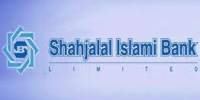Human resource management (HRM) is the strategic and coherent approach to the management of an organization’s most valued assets – the people working there who individually and collectively contribute to the achievement of the objectives of the business.[1] The terms “human resource management” and “human resources” (HR) have largely replaced the term “personnel management” as a description of the processes involved in managing people in organizations.[1] In simple words, HRM means employing people, developing their capacities, utilizing, maintaining and compensating their services in tune with the job and organizational requirement.
Its features include:
Organizational management
Personnel administration
Manpower management
Industrial management
But these traditional expressions are becoming less common for the theoretical discipline. Sometimes even employee and industrial relations are confusingly listed as synonyms, although these normally refer to the relationship between management and workers and the behavior of workers in companies.
Human Resource Management(HRM) is seen by practitioners in the field as a more innovative view of workplace management than the traditional approach. Its techniques force the managers of an enterprise to express their goals with specificity so that they can be understood and undertaken by the workforce, and to provide the resources needed for them to successfully accomplish their assignments. As such, HRM techniques, when properly practiced, are expressive of the goals and operating practices of the enterprise overall. HRM is also seen by many to have a key role in risk reduction within organizations.
“A series of activities which: first enable working people and their employing organisations to agree about the objectives and nature of their working relationship and, secondly, ensures that the agreement is fulfilled”.
A General concept of Human Resource management:
HRM deals with the design of formal system in an organization to ensure the effective & efficient use of human talent to accomplish organizational goals. Human Resource management (HRM) is to refer to the philosophy, policies, procedures and practices related to the management of people within an organization. HR management functions through which manager recruit, select, train & develop organization members. HRM is the systematic planning, development and control of network of inter related processes affective and involving all members of an organization. These processes include:
HR planning and forecasting
Job and work design
Staffing/ recruitment and selection
Training and development
Performance appraisal and review
Compensation and reward
Employee protection and representation
Organizational improvement.
HRM objectives of NCCBL Bank:
The objectives of HRM in NCCBL bank can be described as follows:
Hire the right person for the job
Reduce the employee turnover
Motive employees to perform at high effort levels
Not to waste time with useless interviews
Remove unfair labor practices
Maintain high moral and better human relations inside the organization
Maintain organizational peace
Attract competent employees and retain them in the bank
Recognize and satisfy individual needs.
Risk Management
Risk management in NCCBL is viewed from a cultural perspective. In compatible with the corporate
Strategy of growth and shareholders value addition, risk management has been structured in line with the organizational pattern of the Bank. Bank may be exposed to risk in the form of credit, market, liquidity and operations risk. However, there is another dimension to risk matrix namely reputation risk. Risk management system of the Bank is geared to addressing financial and operational losses besides being compliant on regulatory aspects. Managements of risks involve a process through which business deals/initiatives are taken with the ultimate objective of safeguarding the capital and protecting the flow of profit generation and growth financing. The bank has put in place platforms for addressing the risk paradox. Board and its Committees – Executive Committee and Audit Committee work in tandem with the Credit Committee, Asset Liability Committee, Management Committee and the Internal Control & Compliance Division in this respect.
HRM Planning of NCCBL
HR planning is the first step in the Recruiting & Selection process.
“Personnel planning is the process of deciding what positions the firm will have to fill, and how
to fill them.” –Gary dessler
HRP consists of the following elements:
Establishing and recognizing the future job requirement
Identifying deficiency in terms of quantity
Identifying deficiency in terms of quantity and specification
Identifying the source of right type of language
Developing the available manpower
Ensuring the effective utilization of workforce
Steps of HR planning followed by NCCBL bank:
NCCBL bank follows several steps of the HR planning. These are:
Integrate HR planning with corporate planning:
The first stage of HR planning is to integrate it with corporate planning. In NCCBL bank all
manpower planning stems from business plan in relation to a corporate strategy.
· Forecasting internal & external environment:
The second stage in HR planning followed by NCCBL bank is to forecast of asses the internal &
external environmental factors that affect demand & supply of labor. Environmental factors
include govt. influences economic, graphic & competitive condition.
· Assessment of internal HR capabilities:
In this stage NCCBL bank analyze the internal inventory of HR capabilities. Assessments of internal
strengths & weaknesses as a part of HR planning requires the current job & employees
Capabilities are audited & organizational capabilities are inventoried.
· Predicting & forecasting HR demand & supply:
The information gathered from external environmental scanning & assessment of internal
Strengths & weaknesses is used to predict of forecast HR supply & demand in the light of NCCBL
Banks objective & strategies.
· To locate the required HR:
Once the demand for HR has been forecasted, then their availability must be identified. In this
stage HR planning locate the source from where personnel required will be available. The
Source may be internal or external.
· Allocation of HR:
This is the final stage of HR planning. This is concerned with allocation of human resources
Within an organization over time.
Forecasting HR needs:
When a firm makes a plan for employment requirements, the firm usually needs to forecast
personnel needs, the supply of inside & outside candidates. Different techniques like trend
Analysis, ratio analysis, and scatter plot can be used to estimate staffing needs.
Trend analysis:
Trend analysis means studying variation in the firm’s employment levels over last five years.
Scatter plot: A scatter plot shows graphically how two variables; business activity and firms staffing levels
Training needs and proposed Annual Training Calendar for 2009 of NCCBL.
We believe that appropriate forms of training contributes to Human Resources development and human resources can be developed by way of upgrading the job knowledge and skills. Training is essentially a planned continuous learning process & effort by management to improve employees competency levels & thus to develop individual ability to perform on the job. In-fact, the more information & education we can give to employees, the better equipped they will be to advance within the Bank.
As a part of our training strategy, the HR Training Centre has prepared a training calendar for 2009 based on training needs & requirement focusing on the key areas of banking. The main target group of our training for 2009 are newly recruited officers and mid-level officers.
Meanwhile, we have issued a separate letter on December 18,2008 inviting suggestions including training requirements from the branches / Divisions of Head Office This year, we are contemplating to organize some outreach training workshops on ‘Prevention of Money Laundering’ as per regulatory requirement besides participating in training courses/workshops at BIBM / Bangladesh Bank Training Academy.The following are the proposed training courses & workshops for the year 2009:
Workshops on:
Basel-II/ Customer Service Banking Laws & regulations / Leadership & Team Building / UCP-600 Islami Banking / Anti-Money Laundering / Investment Risk grading / Investment Risks Management & Documentation / ALM / IC& C / Uniform Financial Rating System.Training course on:
Training course on:
Retail & SME Banking / Application of Technology in Banking / Foundation course for new officers / Investment Management Financing Foreign Trade / Business Communication.
The following is the statement of training courses & workshops organized by our Training Centre during the period from 01 -01 -2008 to 31-12-2008
| Sl. | Course Title | Course Duration | Number of participants | Period |
| 01. | “SBS-1 and SBS-2” | One day | 27 | 29.03.2008 |
| 02. | Investment Risk Management | One day | 46 | 30.03.2008 |
| 03. | Prevention of Money Laundering | One day | 75 | 28.06.2008 |
| 04. | Card Operations | One day | 36 | 19.07.2008 |
| 05. | SME Banking | One day at CTG | 45 | 20.07.2008 |
| 06. | “Asset Management & Post Investment Functions along With preparation & Furnishing of Various Periodic Retums/Reports/Statements” | One day | 30 | 26.07.2008 |
| 07. | “Preparation of CL Statement” | One day | 30 | 14.09.2008 |
| 08. | ‘Performance Evaluation through Uniform Rating System” | One day | 72 | 08.11.2008 |
| 09. | Money Laundering” | One day at CTG. | 60 | 05.11.2008 |
| 10. | UCP 600: Documentary Credit” | One day | 60 | 22.11.2008 |
| 11. | Small Enterprise Financing under SME” | two days | 27 | 29.11.2008 to 30-11-2008 |
| Sl. | Course Title | Course Duration | Number of participants | Period |
| 01. | Foundation Training Course-2008 (Investment Operations) | 11 days | 29 | 09.02.08 to 19.02.08 |
| 02. | Foundation Training Course-2008 (Foreign Trade & Foreign Exchange Operations) | 09 days | 30 | 05.04.08 to 13.04.08 |
| 03. | Foundation Training Course-2008 (General Banking) | 11 days | 36 | 28.07.08 to 07.08.08 |
| 04. | “Return Submission Software for Bangladesh Bank” | One day | 21 | 18.10.2008 |
| 05. | IT Operation | 6 days | 10 | 13.12.08 to 18.12.08 |
A. Warkshop
B. Training Courses
Concept of recruitment & selection:
Recruitment is the process of discovering potential candidates for actual or anticipated organizational vacancies. Recruitment is the process of finding qualified people & encouraging them to apply for work with the organization. On the other hand, selection is the process of choosing among those who do apply. To outline the standards that are expected of new recruits to the Bank, and the processes that will be followed during recruitment and selection. The foundation for this policy is that recruitment should only occur when there is a specific business need to be met i.e. vacant post and that the selection of the appropriate candidate will be on the basis of qualification, performance, potential and aptitude.
Recruiting System
In NCCBL bank normally recruitment is done internally. They hire people from internal sources. The
upper level posts are fulfilled by the immediate subordinates. and the lower level employees are recruited from the relatives, friends or known persons of the present employees. Sometimes the bank also gives advertisements in newspapers or on internet. But this advertisement is given for the recruitment of lower & mid level employees. In upper level the gaps are always fulfilled by the internal employees.
HRMs Development System:
Generally, we can classify an organization as being in one of three stages of development with respect to its HRMS .The three stagaces are discussed below.
- Ø Basic personnel system :
A number of Canadian companies are still operating at stage one with a basic personnel system .This bare-bones approach to an HRMS incorporate data- bases that often mix written records on file with other data elements stored on a computer database .The data maintained by this type of system focus on the following areas : 1>Employee records (e.g. individual profile ,personnel information sheet ,application form ,orientation acknowledgement ,employee agreement or contract).
2>Payroll (wage or salary , attendance and vacation entries ,and pension and benefit data).
3>Staffing(job description for executive and key organizational jobs only),and
4>Basic data required for compliance with pertinent labour legislation.
- Ø Augmented HR system :
Movement to the second stage, an augmented HR system, occurs when the organization decides to commit the resources to become more proactive with respect to HR policy decisions
- Ø Comprehensive and Interactive HRMS :
Relatively few companies have evolved to the stage –three setup of a comprehensive and interactive HRMS .This type of HRMS configuration enables the HR planning staff to run future “what if” scenarios to determine the best future policy alternatives given a range of possible outcomes .
In such an instance ,the computer search could select candidates who had (1)performance appraisal ratings of “above average “ or higher over the past five years , (2) successfully completed a graduate degree (preferably an MBA),and (3) a minimum of five years seniority in the organization .
Socialization:
National Credit And Commerce Bank Limited (NCCBL) scholarships for poor, brilliant students
Shahjalal Islami Bank Limited (NCCBL) Tuesday awarded 330 poor and brilliant student’s scholarship worth around Tk 4.3 million as part of its corporate social responsibility (CSR).
The bank gave 220 students passing the SSC examination in 2008 a lump scholarship of Tk 12,000 each and 110 students figuring well in the HSC examination the same year Tk 15,000 each at a function at the city’s Bangabandhu International Conference Centre.
Education Minister Nurul Islam Nahid, attending the scholarship giving ceremony as the chief guest, handed over the scholarships to the students.
Extolling the NCCBL’s initiative, Nahid sought cooperation of all in updating the country’s education system and implementing the projects the present government has taken in this regard.
Training and Development:
In simple terms, training and development refers to the imparting of specific skills, abilitiesand knowledge to an employee. A formal definition of training & development is… it is anyattempt to improve current or future employee performance by increasing an employee’sability to perform through learning, usually by changing the employee’s attitude or increasinghis or her skills and knowledge. The need for training & development is determined by theemployee’s performance deficiency, computed as follows:
Training & Development need = Standard performance – Actual performance.
We can make a distinction among training, education and development. Such distinctionenables us to acquire a better perspective about the meaning of the terms. Training, as wasstated earlier, refers to the process of imparting specific skills. Education, on the other hand, isconfined to theoretical learning in classrooms.
Though training and education differ in nature and orientation, they are complementary. Anemployee, for example, who undergoes training is presumed to have had some formaleducation. Furthermore, no training programme is complete without an element of education.In fact, the distinction between training and education is getting increasingly blurrednowadays. As more and more employees are called upon to exercise judgments and to choosealternative solutions to the job problems, training programmes seek to broaden and developthe individual through education. For instance, employees in well-paid jobs and/or employeesin the service industry may be required to make independent decision regarding there workand their relationship with clients. Hence, organization must consider elements of botheducation and training while planning there training programmes.
Training at NCCBL
NCCBL training academy started operations from October 2008. The bank views the TrainingAcademy as a strategic business link in business growth. The Academy will organize training and
Development programs all round the year for employees of the bank to familiarize and equip them in various areas like General Banking, Credit Management, Foreign Exchange and Foreign trade, Anti-Money Laundering etc.
A total number of 1411 officials from the Bank participated in different training programs, workshops and seminars locally and abroad during 2008. NCCBL Bank training academy organized
In-house local training programs for1125 Officials of the Bank related to different functional areas of Banking while 196 officials were imparted training in Bangladesh Bank Training Academy, Bangladesh Institute of Bank Management and other institutions.
Organized By Participants
| ||||
| ||||
| ||||
| ||||
| ||||
Performance Appraisal system of NCCBL Bank
Human resources are the people that work for an organisation, and Human Resource Management is concerned with how these people are managed. However, the term Human Resource Management (HRM) has come to mean more than this because people are different from the other resources that work for an organisation. People have thoughts and feelings, aspirations and needs. The term HRM has thus come to refer to an approach, which takes into account both:
1. The needs of the organisation
2.the needs of its people.
Different individuals have their own needs and aspirations. HRM therefore involves finding out about the needs and aspirations of individual employees, for example through the appraisalprocess and then creating the opportunities within the organisation (e.g. through job enlargement) and outside the organisation (e.g. through taking up educational opportunities at local colleges/universities) for employees to improve themselves. HRM therefore relates to every aspect of the way in which the organisation interacts with its people, e.g. by providing training and development opportunities, appraisal to find out about individual needs, training and development needs analysis, etc.
Performance appraisal is the process by which organizations evaluate individual job performance. When it is done correctly, employees, their supervisors, the HR department, and ultimately the organization benefit by ensuring that individual efforts contribute to the strategic focus of the organization. However performance appraisals are influenced by other activities in the organization & in turn affect the organization’s success.
The performance measurement tools used by the HR department of NCCBL bank are given below:
Promotion:
A promotion is given every year normally 3year duration from last promotion, based on performance. Manager suggests the employee who he thinks is suitable for promotion. The employee who can mobilize deposits and help in gaining profit in the prior position.
Transfer:
Normally transfers occur after 3years of an employee in one branch. It happens based on the employee’s performance. If an employee is very efficient and needed in a branch then he is transferred there. This is decided by HRD.
Compensation:
The bank maintains fair and competitive remuneration packages based on business needs and
competitor practices. A compensation and benefit survey is conducted on a regular basis, which
Involves the bank obtaining salary information form other foreign banks in Bangladesh such as Standard Chartered, American Express. The compensation package includes a competitive salary, and progressive benefits, all designed to influence and reward personal achievement.
Salary:
Salary is as stated in the appointed letter. However, any changes will be notified in writing. Upon
Satisfactory completion of the probation period a basic monthly salary increment of 10% will be awarded. Furthermore, employee’s salary will be reviewed on an annual basis in April according to his/her performance and may be adjusted at the discretion of Bank.
Salary Payments:
Monthly salary will be credited into staff account, which he/she opens upon joining the Bank. Salaries are paid on 25th of each month in arrears, plus other allowances less deductions such as Income Tax, contribution to Provident Fund etc. Each employee will receive a monthly pay statement detailing gross pay and deductions.
Allowances:
Various allowances are paid in the Bank such as Housing Rent, Conveyance, Leave, Tiffin, and
Medical.
Bonus:
The Bank awards bonuses in addition to basic salaries for occasions such as Eid, as Festival bonuses. It gives two bonuses in a year. The bonuses are equal to the basic salary. Sometimes the bank gives bonuses to the employees according to their performance. This performance is calculated of a branch as a whole. If any branches do better then all of its employees are rewarded with a bonus.
HR department of NCCBL bank uses the information gathered through performance appraisals to
evaluate the success of recruitment, selection, orientation, placement, training, and other activities.
Employee benefits
Compensation:
Pay is an important feature of human resource management – after all, it is the main reason why people work. It is a sensitive and controversial area that has been extensively debated at both practical and theoretical levels. In the US the term ‘compensation’ is used to encompass everything received by an employed individual in return for work. For example, Milcovich et al (2001: 6) state that:
“Employees may see compensation as a return in exchange between their employer and themselves, as an entitlement for being an employee of the company, or as a reward for a job well done” (original emphases).The reward or compensation people receive for their contribution to an organization includes monetary and non-monetary components. Remuneration does not simply compensate employees for their efforts – it also has an impact on the recruitment and retention of talented people. The term ‘reward management’ covers both the strategy and the practice of pay systems.
Provident Fund & Gratuity:
The Staff Provident Fund Scheme is a voluntary contribution scheme. The employee will be entitled to join the scheme upon completion of the probation period. The employee will be entitled to benefit from the scheme after completion of five years service & payment will be made upon resignation, termination, and retirement. The employee will also be entitled to a gratuity payment equal to one month’s basic salary for each year of service after five years upon his/ her resignation, retirement.
Medical:
Married employees will be entitled to a medical allowance for their respective grade for their spouse & children up to the age of 19. Single employees are entitled to half of the medical allowance for their respective rank. In both cases medical expenses incurred will only be reimbursed when supported by approved medical vouchers.
Employee Loans:
The employee Loan policy has been established at preferential rates to provide financial assistance to qualified & deserving employees of the bank. The bank’s policy shall be reviewed periodically. Employees will be eligible for the banks subsidized Housing Loan scheme. Car loan & sundry loan Schemes upon satisfactorily completing the required number of year’s service & achievement of performance standards. Separate policies are available for employee reference & guidance from HR/ADMIN department. Applications for loans should be sent to HRC through respective Head of departments. The CEO shall approve loan applications.
Employee Group Insurance:
The bank provides all permanent & contract employees with insurance via the Workmen’s Compensation policy.
Transfer:
A member of Staff will be required to serve any of the Bank’s offices in Bangladesh or
subsidiary/associated companies of the bank. The bank reserves the right to transfer employees
as the business dictates. Employees therefore will, from time to time, be required to be
transferred to other departments & branches if opened in the future. Such transfers will help
employees obtain a balance experience of banking operations & develop/broaden their
experience base.
CONCLUSIONS
There are a number of Private Commercial Banks, Nationalized Commercial Bank’s and foreign Banks operating their activities in Bangladesh. The NCC Bank it is one of them. For the future planning and the successful operation for achieving its prime goal in this current competitive environment this report can be a helpful guideline.
From the practical point of view I can declare boldly that I really have enjoyed my internship at NCC Bank from the first day. Moreover, internship program that is mandatory for my BBA program, although it is obviously helpful for my further thinking about my career.
BIBLIOGRAPHY
National Credit & Commerce Bank Limited, Annual Report (2008), Dhaka.
www.nccbank-bd.com
www.bangladesh-bank.org
Debnath, R.M (2008), Business of Banking, (2nd ed), Dhaka, Nabajuga Prokashani.
Lesikar’s, R.V, et at (1999), Lesikar’s Basic Communecation (8th ed), USA, The MeGraw Hill Companies, Inc.
Thapisa, A.P.N., “Indigenous Training for a Changing South Africa”, Librarian Career
Development, Vol. 1 No. 1, 1993, pp. 16-19.
Manpower, Education and Training: Report of the National Manpower Survey, 1986,
National Manpower Steering Committee, Mbabane, 1987. See also: Manpower, Education and Training, International Labour Office, Geneva, 1987.
Bedeian, A.G., Management, Dryden Press, Chicago, IL, 1986.
Werther, W.B. and Davis, K., Human Resources and Personnel Management, McGraw-Hill, New York, NY, 1989.
McKechnie, I., “Human Resources Management”, in The A to Z of Careers in
South Africa, Don Nelson, Cape Town, 1989, pp. 98-107
















